This post is a shout-out to sometimes under-appreciated Forest Service folks and contractors- the archaeologists. Also please consider volunteering for the Passport in Time program. The website has a list of ongoing and completed project by Forest.
Broadly speaking, we can’t understand forest structure today without understanding the past. And history almost always involves people- Native and Imported Americans (historically, they weren’t all Euro and not all “white”). So here we are today, and sometimes we can’t see the imprints of our predecessors simply by driving by or walking through the landscape. That’s why we need the help of historians and archaeologists. On that note, I’d be interested in posting other historic studies of current National Forest land.
We can read the words of people in the past, though, as with Leiberg’s observations around 1900, and archaeologists examine artifacts and can tell us more. Keep in mind that for example, the Medicine Bow forest was initiated in 1902 (at least according to Wikipedia) so these activities were all pre-National Forest designation.
It wasn’t until I attended a presentation by Dave McKee of the Bighorn National Forest that I realized the extent that the Sierra Madre had been modified into a populated landscape to provide tie hacks to the railroad. Looking at the size of the streams, it’s hard to imagine logs going down them. Yet at one time, the railroad was the main conduit for travel and transport in the Interior West, and streams were the mode of transporting logs, even in this fairly dry country. Here’s a paragraph from Dave’s paper Tie Hacks 2009 in the Wyoming Archaeologist.
Intensive mapping and site recording procedures were used to describe a set of historic logging camps along the East Fork Encampment River drainage on the Medicine Bow National Forest. Logging camps associated with Carbon Timber Company’s operations can be categorized into two basic sites types including communal and satellite camps. A trail system linking these sites together provides the framework for the historic landscape. Communal camps may have served as distribution centers for critical resources such as horse teams and supplies. An analysis of artifacts suggests the presence of women and/or children in a number of camps. Preliminary spatial analyses suggest communal camps were centrally located within a group of satellite camps to maximize resource distribution and enhance efficiency of logging operations within the larger East Fork drainage. The data provide a picture of an organized resource extraction industry located in a rugged and rural environmental setting.
After I heard Dave McKee’s excellent presentation at a Rocky Mountaineers (FS retiree) meeting, I looked around and found that tie hacking has a history in many places with railroads. It might even be something that occurred on your neighboring forests.
Tie Hacks 2018 Oct 30 2019 is a copy of Dave’s powerpoint. Great photos, I have just pulled out a few for this post. I’m hoping that someday Dave will video his presentation and we can share that!
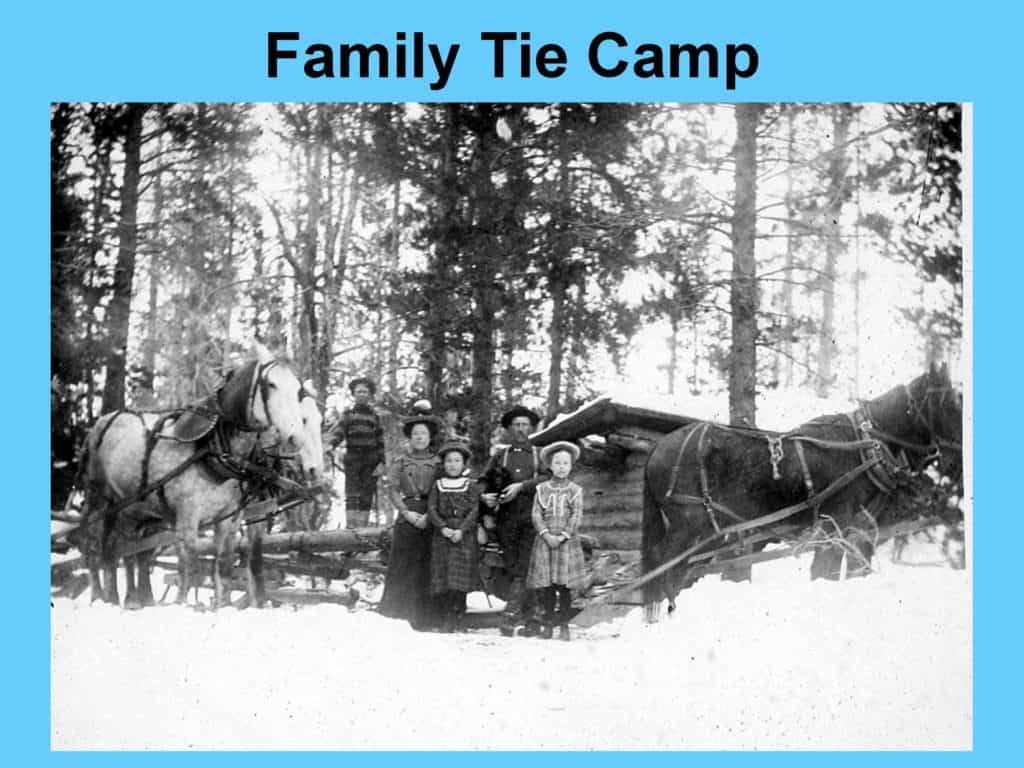
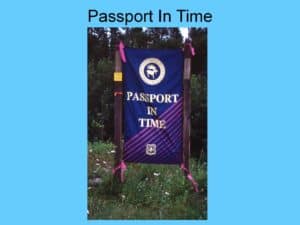
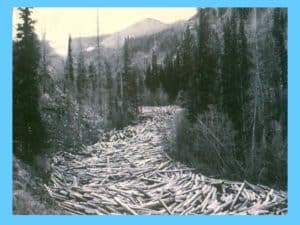
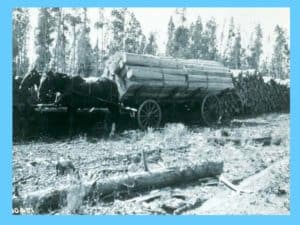
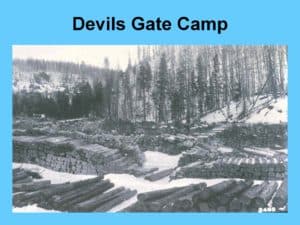
One of my favorite stories told by the old timers was of hand splitting Port Orford Cedar railroad ties for shipment by boat from Port Orford, Oregon to San Francisco.
The “tie mill” had a long history in Coos County, and wood railroad ties are still in demand.
And similar tales of western larch used for mine shaft supports in, E WA, ID and MT mining country.
Cutting cross ties put a lot of food on the table in the Eastern forest also. See
https://www.rta.org/assets/docs/150%20Year%20History%20Full%20Book.pdf
I am proud to have authored the “only” National Register of Historic Places nomination for a stump field, according to Wikipedia: https://en.wikipedia.org/wiki/Barney_Flat_Historic_Railroad_Logging_Landscape Back in the 1990s we did a “thematic” NR nomination for historic logging railroads, including camps, lines, trestles, and portable mills. I decided that we needed to include a “fossil” logging landscape, too. There was a great example of high stumps left in an open field next to a highway. Our investigation found that logging the scattered big trees actually changed the micro climate in that valley, which prevented regrowth of new trees because it became too wet and too cold. Our investigation also showed that the historic landscape held fewer trees than foresters had assumed. Neat to see archeologists get their due!